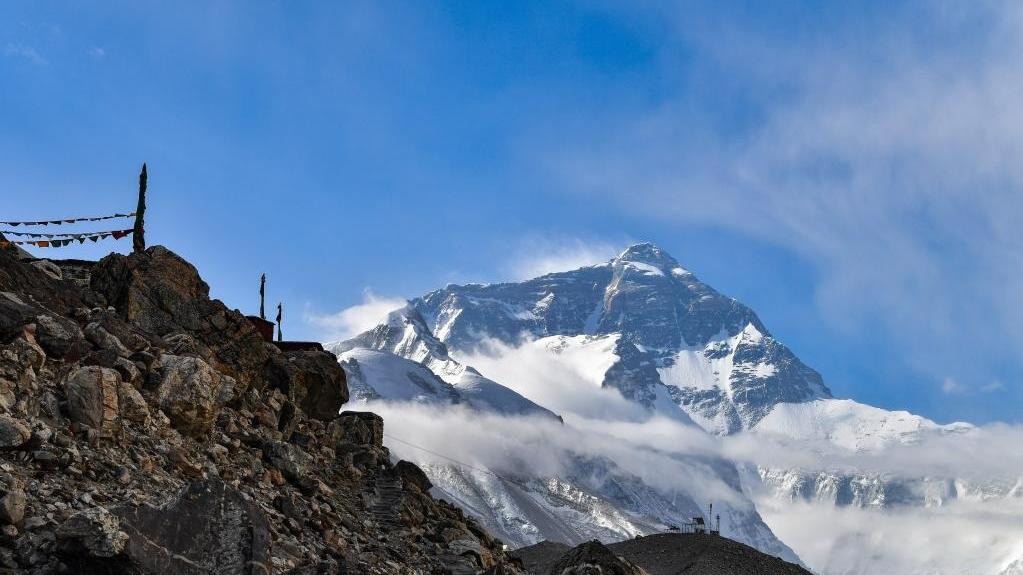 This photo taken in the morning of May 12, 2023 shows a view of Mount Qomolangma in southwest China's Tibet Autonomous Region. (PHOTO / XINHUA)
This photo taken in the morning of May 12, 2023 shows a view of Mount Qomolangma in southwest China's Tibet Autonomous Region. (PHOTO / XINHUA)
Qomolangma, lying on the border of China and Nepal, and known as Mount Everest in the West, has trended on social media after a female mountaineer refused to pay the full cost of her rescue after being left for dead at over 8,000 meters by her Sherpa guide on the Nepal side of the mountain last month.
The 50-something was found by Fan Jiangtao, leader of a mountain-climbing team from Hunan province, at around 8 pm at the altitude of 8,450 meters on his way to the summit, at 8848.86 meters, on May 18, reported Shangyou News, a media outlet of Chongqing Media Group.
The woman had been abandoned by her Sherpa after she was unable to carry on and her guide believed it too difficult to save her at an altitude of over 8,000 meters.
The Qomolangma "death zone "begins at a height of 8,000 meters. At that altitude and higher, there is not enough oxygen for humans to breathe and cells in the human body begin to die of oxygen deprivation.
Fan told Shangyou that he and other members of the team asked her whether she would join them before their departure but she refused. "We never thought that she would make it alone."
Fan said that he and another team member named Xie Ruxiang decided to give up their journey to the summit and rescue the woman by getting her to a base camp as soon as possible after promising a tour guide $10,000 for helping them do it. The rescue work took them over four hours.
However, since recovering and her life saved, she has refused to repay the $10,000 rescue cost and instead only agreed to pay $4,000.Fan said that he and Xie had paid the rescue fee up front, shouldering $5,000 each, and he felt upset by the situation.
The reaction online has been visceral, with many commenters saying that the woman's actions were selfish and that she should pay for the full cost of the rescue that saved her life.
Qomolangma has two climbing periods, in spring and autumn, with moderate temperatures and softer winds. According to the Nepal Tourism Board, 12 mountaineers died and five went missing in the just-finished climbing window of late May to early June.
Unlike the dangerous journey conquering the summit, trips to Qomolangma base camp in the Tibet autonomous region are a more popular choice for travelers who can see the mountain from an altitude of around 5,200 meters.
"We saw a travel boom during the May Day holiday (April 29 to May 3) with many tourists visiting the base camp in the region's Shigatse city," said Gyatso, a local tour guide. "Travelers needed to line up for at least half an hour or even an hour to take a picture in front of the stone marker with the altitude'5,200 meters' engraved on it."
He said travelers bound for the base camp usually depart from Lhasa, the region's capital, and stop at the urban area of Shigatse for sightseeing. They then travel to a town in the city's Dingri county and take a 50-minute sightseeing bus trip from the town to the base camp.
"The base camp we usually mention is for travelers while the mountain climbers have their base camp eight kilometers away. As far as I know, the mountain climbers should take at least one month of training before starting their journey to the Qomolangma summit and the training costs from 500,000 yuan ($70,300) to even one million yuan," he said.


